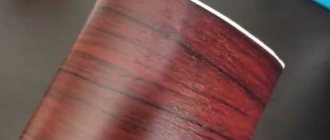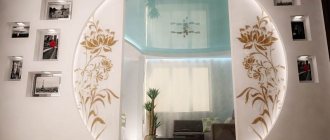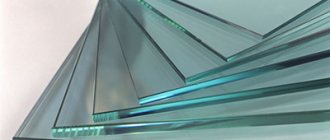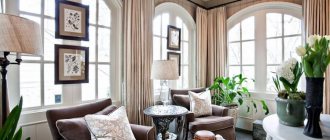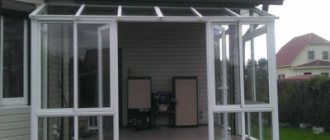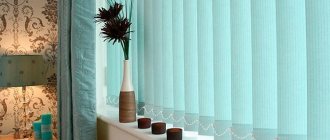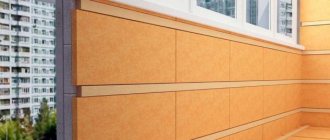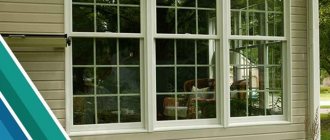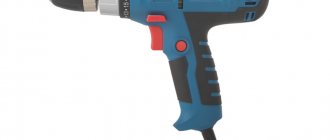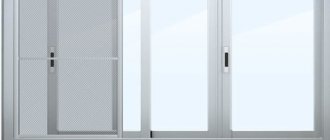The finishing of door and window openings is the final stage of decoration, during which a variety of types of finishing are used. Difficulty arises in the case of openings of an unusual configuration, for which not every cladding is suitable, and then an arched corner comes to the rescue. Let's figure out what features the finish has and how to use it correctly.
Asymmetrical arched opening Source yandex.net
Functions of arched trim
An arched doorway is one of the underrated architectural details in modern housing. With its help, the layout of the most ordinary apartment or house can easily change its appearance, acquiring features of originality. The arch becomes an alternative to interior doors and makes it possible to move away from standard design solutions.
By choosing an arch, the owners receive a harmonious, integral space, designed to their liking, because the shape and size of the arched opening is created individually. However, along with their originality, the owners acquire an additional problem. The fact is that the curvilinear shape of an arched opening is much more difficult to make straight. Getting the perfect line becomes a difficult task even for a master with solid experience in plastering work.
However, even if the renovation is carried out by owners who are not familiar with the intricacies of finishing work, they have an easy opportunity to get perfectly smooth edges in the arched opening.
Varieties of flexible corner Source windowvtyumeni.rf
The possibility is to use a flexible corner for the arch. This type of finishing is specially designed for the design of complex-shaped openings and joints. The corner profile is considered a universal material, as it performs several functions at once:
- Smoothes corners, aligns edges, and gives the arched structure completeness.
- Protects the decorative coating of the arch. It is no secret that over time the corners of the structure suffer: the wallpaper wears off, the plaster crumbles, and the putty deteriorates.
- As a rule, an arched opening is decorated, trying not to use bright colors and wallpaper with large patterns (their edges are difficult to join neatly). A correctly selected corner profile makes the arch design more interesting.
- Plays the role of a reinforcing element, helps to avoid deformation of the opening material from mechanical damage.
- Hides defects of imperfect alignment of the edges of the structure.
Types and purpose of arched corners
According to their functional purpose, arch corners are divided into two large groups: plaster (perforated) and decorative.
Perforation simplifies profile installation Source zhk-akvapolis.rf
Perforated
A perforated corner profile is, in fact, a base on which plaster is applied. It is used as a corrective detail that is hidden under the finishing trim.
The market offers a flexible perforated profile made of metal or plastic. Perforations (rows of holes) are applied across the entire surface of the material, hence the name.
One edge of the L-shaped profile is smooth, the other is cut in the form of peculiar petals. Perforation plays an important role: it allows you to create a perfectly smooth edge even on uneven areas of the arch; This reduces putty consumption. The petal-shaped edge is needed not to save material, but to obtain a more accurate fold, without unnecessary deformations or creases.
Arch made of plasterboard with a laid profile Source stroyfora.ru
Decorative
Decorative arched corners are used for arched and window frames. With their help, it is easy to close the radius corner and give the architectural element a completed look. Decorative corner parts have the following characteristics:
- Made from plastic, polyvinyl chloride or polyurethane, hot-bent to obtain a profile at an angle of 90°.
- The palette of finishing materials is quite diverse. The most popular color is white and all shades of brown.
- Some manufacturers produce embossed PVC corners, which expands their decorative capabilities.
- The average profile length does not exceed 3-5 m, the minimum bend radius is 1.2 m.
There is another type of arched corners, which is classified as lumber, as it is made from cork. Cork outer corner is most often used to design arched structures; It is also used to mask the joints of cork panels and to decorate external corners.
Finishing the doorway with classic elements Source akfengroup.ru
The cork profile presented on the Russian market is produced in Portugal and has the following features:
- The length of the lumber is 90 cm, the width and thickness are 2.5 cm each.
- It has good flexibility and is suitable for decorating arches of any radius (within reason).
- Demonstrates all the qualities of cork: it is not afraid of moisture and temperature fluctuations, is highly durable and wear-resistant, and is environmentally friendly.
- When installing, you must use a special adhesive for cork panels.
- Compared to plastic counterparts, it is less durable and more expensive, which is why it is not in great demand.
See also: Catalog of companies that specialize in finishing materials and related work
Polyurethane molding for framing arches
Various materials are used to decorate and emphasize the functional purpose of the arch:
- tree;
- stone;
- wallpaper;
- laminate;
- plastic.
Each of them serves as both decoration and protective covering. Recently, framing arches with polyurethane moldings has become popular.
Molding in the interior
Polyurethane is a type of plastic that has a lot of positive qualities. It is durable and at the same time flexible, resistant to low temperatures, and easy to use. Decorative moldings are made from polyurethane. They are made in the form of stucco or corners. Let's take a closer look at the characteristic features of these products.
Stucco molding
You've probably come across stucco if you visited old buildings decorated in a classical style. There you could also see beautiful arched structures.
Flexible white polyurethane molding for arches
At one time, stucco decoration was created from plaster using relief patterns. The use of stucco began in Venice. It was used to frame cornices, doorways and other architectural structures.
Today, stucco molding is often made not from gypsum, but from polyurethane. However, it has retained its characteristic features: graceful and unique curves and the white color of plaster, which is the most popular. It is possible to paint stucco molding in other colors, but according to tradition, in people’s minds stucco molding appears to be a snow-white decorative element.
The use of stucco is not appropriate in all cases. If the house has modern features and style, then the use of a decorative element in a classical style with large relief may look awkward and alien. In order not to create a strong contrast between the elegance of ancestors and the practicality of contemporaries, it is recommended to abandon the use of stucco altogether or use products with small relief.
Classics are replete with stucco moldings
Well, if the interior of the house is imbued with the spirit of classicism, then stucco will become the center of this element and decorate it, like a cherry on the cake.
Decorating with stucco is appropriate if the interior has elements that can be combined with such decoration
Installation of polyurethane products will not take much time and will not require complex work. To border an arched opening with stucco, you must first prepare it. The surface is cleaned of dirt and dust, degreased and dried.
If stucco is used, then most likely the house is decorated in a classic style, which means either plastered and painted walls or patterned wallpaper. You cannot glue polyurethane products over wallpaper, so you will have to remove excess areas under the decorative element.
To do this, apply the decorative element to the wall and, holding it, lightly outline the outline on the wall with an inconspicuous pencil. Under no circumstances should you cut the wallpaper along the line. If you do this, then the wallpaper and stucco molding will be in contact, and there may be places where the wallpaper does not reach the product. You need to step back 3-4 millimeters from the line to the opening and cut off the wallpaper with a utility knife.
Molding
Another element that can be used to make the final covering of an arched structure is molding. Arched molding is a collective concept for products made from various materials, which are made from:
- plastic;
- metal;
- PVC;
- wood;
- polyurethane foam.
Aluminum moldings are durable, but not suitable for all styles, so they are not in great demand. But high-tech and similar trends in design are not very common.
Arch molding
Wooden moldings are also not used very often, because such structures are difficult to size. Each arch has its own radius and arc length. If you use wood products, then you need to either select and look for a suitable element, or already at the stage of manufacturing the arched doorway, observe the required dimensions for the molding.
Products made of plastic are much more promising: polyurethane or PVC. Polyurethane moldings and corners are in greater demand than other decorative elements for arched structures.
Moldings are flat strips of varying radius, width, relief and color. You can select the desired product configuration for any doorway configuration. Products made from polyurethane are popular because they are flexible, can be molded into any shape and can be bent in different ways to frame a doorway.
Flexible structure makes installation easy
This is practical, because arched structures are not always as smooth and even as possible. Today it is fashionable to decorate the house with your own hands. Therefore, sometimes it is not possible to avoid mistakes. Polyurethane moldings will hide defects and irregularities that catch your eye.
Advantages of plastic finishing
Arched plastic corners have become a common decorative element due to the following possibilities:
- Variety of applications. With their help, not only arched structures are finished, but also suspended ceilings, as well as niches in plasterboard walls.
- Multifunctionality. The material helps to even out the edge, hide unevenness and problem areas, and protects the finish from premature wear.
- Practicality. Arched profiles are suitable for most interior solutions.
Finishing a niche with a contrasting corner Source glotr.uz
- Affordable cost and long service life of plastic products.
- Variability. They are produced in a wide color palette, so you can always choose the finish of the desired color.
- Easy installation. Installation is not difficult; it is carried out on any surface in different ways: using sealant, glue or nails. Additional processing (coloring) is not necessary.
- Easy care. PVC products are not afraid of wet cleaning and can be easily cleaned with water and household chemicals.
Decorating walls with moldings: color solutions
By choosing the right colors of moldings, you can create delightful architectural masterpieces. To do this, you need to plan everything and add a little imagination.
A light molding will look great against a dark background or in poorly lit rooms. This way you can decorate not only walls, but also doors, ceilings and pieces of furniture.
Light molding on a dark background
To create comfort and coziness, pastel shades should be introduced into recreation areas, as well as into the living room - with the help of such moldings you can concentrate attention on paintings, memorable photographs and other interior items
Pastel shades
To create an original interior, you can safely use bright or colored moldings. They should be painted several tones higher or lower than the wall color, or in rich shades.
Colored moldings for an original interior
How to choose a decorative corner
So that the finishing does not look alien and fits into the interior, it is selected in relation to the design of the room. The smaller the room and the lower the arch, the narrower and more inconspicuous the corner should be. The following solutions lead to the desired result:
- Choice to match the wall decoration. If the wall decoration is done in a calm palette, then it is desirable that the colors match. If there are several shades on the walls (for example, wallpaper with floral or geometric motifs), then choosing a color is easier, since it is not necessary to achieve a complete match.
Finishing the opening in the kitchen Source zhk-akvapolis.rf
- Matches the baseboards or doors in adjacent rooms. The solution will be successful if you can choose tone-on-tone shades. Here you need to pay attention to get into the color, since even white has many varieties.
- Select complementary or contrasting colors. In some interiors, the contrasting finish of the arch looks good, but its color, as a rule, is duplicated in other places: on the suspended ceiling, baseboards, in the frame of pictures and mirrors, on decorative medallions and wall panels.
- To match the floor covering. As in the previous paragraph, color support is needed in other interior details.
Moldings on the walls
Wall moldings are not just strips. Frames are made from these elements, which can simply limit part of the space in which a mirror or picture will hang. This selection helps to more clearly organize the space and highlight the subject.
Pictures framed from moldings
Frames made from moldings can also be filled with other finishing material. Previously, tapestries, brocade and other expensive fabrics were inserted into such frames. Today, they are increasingly using a different type of decorative putty, wallpaper, or simply a different shade of paint.
Inside the molding frame is a different color
Another common technique is the design of doorways. In addition to the standard frame of the opening, there is also a frame above the door. This space usually remains empty and is not used in any way. To ensure that there is no imbalance during complex decoration, molding is also glued here.
Slats over the door
Using wall moldings, you can visually make the ceilings higher. To do this, strips are installed at a certain interval. You can use them not only to make frames. These are decorative strips and are not too difficult to create patterns with.
Molding patterns on walls
All these decoration techniques require a large space, otherwise the room turns out to be too “overloaded”. In small rooms, if they are used at all, it is usually only planks at the junction of the wall and ceiling, and maybe a couple of thin strips to separate different textures or colors. Most often you can see moldings in the interior of the living room - these rooms are usually the most spacious. Moldings look good in bedrooms, but not in small ones, but at least in medium ones.
Subtleties of arch finishing: tools and techniques
You can choose an arched corner after the furniture has been placed in the room, curtains and carpets have appeared. This will help you imagine the end result and decide on the appropriate color. The arched corner is not only flexible, but also has a special design that allows the finish to be firmly fixed on a curved surface.
Design of an arch between the room and the balcony Source derevyannie-doma.com
Video description
You can find out which plastic corner is suitable for an arch in the following video:
Sometimes, if the corner is made of thin PVC, you can bend it with a household hairdryer. To do this, the profile is run along the arch, and at moments of increased tension (usually 3-4 places), the plastic is heated with hot air. When the stress on the fracture is removed, the plastic itself falls further along the arch. The method is suitable for ordinary (not figured) arches.
Profiles offered in hardware stores have a length of 3-7 m; When working with a corner on an arch, you often have to cut it. The choice of tool for cutting planks depends on the material.
The thin plastic from which the arched trim is made can be cut with a knife (construction knife or stationery knife) or sharp scissors. A perpendicular cut is easier to make with scissors. To do this, the corner is cut from both sides to the bend point, and the rest is cut with a knife. If the cut is not ideal, it is smoothed with a knife or polishing sandpaper (fine-grained).
If a cut is needed along the fold, then it is first marked along the inner corner, and the cut (not through) is made with a knife. Then the shelf that is supposed to be removed is folded back, and it breaks according to the mark. Irregularities are smoothed out with sandpaper or a knife.
Assembly adhesive (liquid nails) Source yandex.net
To install the arched corner you will need the following tools and materials:
- Arched corners, decorative or perforated.
- Spatula, mallet (rubber hammer), possibly a hair dryer.
- PVC glue, liquid nails.
- Nails, screws (for both metal and plastic products).
- Primer, putty.
Installation
Installation of corner profiles on the arch is carried out in the following sequence:
- Before gluing the corner onto the arch, calculate how much material is required. The possibility of joining is taken into account: if it is performed at an angle, some material will have to be cut off. It is recommended to purchase material with a small margin in order to insure against errors in calculations.
- The planks for joining are cut and adjusted. It is better not to cut all the material at once, but to do it gradually, as needed. If the profile length is not enough, it is better not to sharpen it on one side, but to add length symmetrically on both sides.
Laying a corner along the edge Source zhk-akvapolis.rf
- For a perforated profile, prepare the surface: clean it of the old finish, degrease it, prime it and putty. The smoother the edge, the better the plank will fit, and the easier it will be to secure it.
- The glue is applied to the profile in an even layer, and then it is fixed on the arched edge (liquid nails are applied pointwise). Many compounds do not set immediately, so it is possible to correct the position.
- For work, choose a transparent adhesive composition (silicone plumbing sealant, liquid nails). Under the white trim, you can use white glue.
- For a more durable fixation, it is recommended to secure the decor additionally using masking tape.
The profiled corner is mounted on the base of the arch Source zhkpribrezhny.rf
Self-registration
Self-repair is an everyday matter and not so rare. Especially, the finishing touches, such as gluing the ceiling moldings, are left “as a snack” for the owners. The instructions below will tell you how to bend a border with your own hands.
Technologies
It is not so difficult to turn a bending baguette into a beautiful rounded interior element. So: how to bend a polystyrene foam product? You won't realize it right away.
Let's consider ways that will help in this delicate matter:
A simpler rounded shape can be decorated with a baguette curved in this way. This is done quite simply - small cuts are made on the back side, so that the molding can take on a rounded shape.
- Method 2. Heat treatment
Another option for radius bending is heat treatment. Polyurethane moldings lend themselves perfectly to it. When heated, they turn into a very plastic material, comparable in its flexibility to rubber. While the baguette is in this condition, it can be easily glued to the desired location.
- Method 3. “Constructor”
Ceiling fillets can also be cut into small components, which together repeat the shape of a circle. This is not easy to do, and only professionals can do it. An example of how this looks in reality is clearly demonstrated by the floor plinth in the photo below.
- Method 4. Modeling
And the last, but no less effective way to create a rounded shape is to cut off the stiffening ribs on the back side and paste them with ordinary tape. Such fillets are capable of repeating not just a rounded shape, but also any other, even the most complex modification.
If you haven’t decided yet how you will bend the ceiling plinth, the video below will clearly demonstrate the available types of processing.
Briefly about the main thing
When finishing an arch, the biggest problem is the outer corners, which are difficult to design perfectly and reliably protect from accidents of use. The solution is to use flexible corners: arched trim made of plastic, metal or cork.
Corner profiles can serve as a base, like a perforated corner, which, after fastening, is masked with finishing. Another type, decorative profiles, perform not only a protective, but also a decorative role.
To fix the finish, various adhesives, screws, and nails are used. Gluing begins from the middle part, pressing the profile and fixing it with tape. When the glue dries, remove the tape.
Advantages of flexible skirting boards
The plinth is called flexible because the main characteristic of the material is the ability to bend, ideally adapting to uneven surfaces. The material is indispensable for finishing rooms with non-standard, round or polygonal shapes of walls and other surfaces.
When finishing curved walls, rounded columns or decorative interior arches, it is impossible to achieve perfect joining and aesthetic finishing using a regular hard plinth. Even when joining small pieces, seams will be visible, while flexible skirting tape allows you to achieve a perfect curve and a neat finish.
